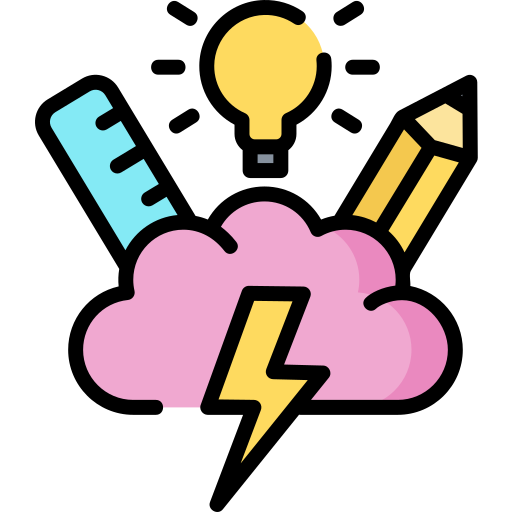
This logo isn't an ad or affiliate link. It's an organization that shares in our mission, and empowered the authors to share their insights in Byte form.
Rumie vets Bytes for compliance with our
Standards.
The organization is responsible for the completeness and reliability of the content.
Learn more
about how Rumie works with partners.
Picture walking into an elementary school classroom that's not just filled with pretty decorations, but also with lots of laughter, friendly chatter, and a real excitement for learning. What makes thisclassroom so special?

A positive learning environment is more than just "Instagram ready," it’s the culture fostered by you, their classroom teacher!
Building Relationships
To make learning awesome, teachers can:
Be friendly with students. Get to know them, talk, and listen.
Give helpful feedback. Tell them how to improve, so they grow.
Set a good example. Show how to behave and be kind.
Praise hard work. Celebrate when they try hard and do well.
Check out the video below from Rita Pierson, a passionate teacher who tells the story of how she connects with her students:
Diversity and Inclusion
Celebrating differences makes the learning experience richer and more meaningful.
Understanding that everyone comes from unique backgrounds and brings their own perspectives can open up new ways of thinking and problem-solving to the learning environment.
Promote the use of inclusive language to ensure that no one feels left out. Elementary students are still in the process of developing their communication skills, so they need targeted support in this area!
Address any issues promptly, whether it's a conflict or a misunderstanding so that everyone feels respected and valued.
Incorporate storytelling into lessons to make learning engaging and relatable for young children. Share diverse stories that convey positive values and morals, facilitating an early understanding of diversity and inclusion.
These continued practices create a safe and welcoming space for everyone to learn and grow, knowing that we're all part of a supportive and inclusive community.

Quiz: Ms. Johnson's Class
 Ms. Johnson's class is diverse, with students from various backgrounds. She wants to foster a more positive learning environment through diversity and inclusion. Which of the following can help Ms. Johnson achieve her goal?
Ms. Johnson's class is diverse, with students from various backgrounds. She wants to foster a more positive learning environment through diversity and inclusion. Which of the following can help Ms. Johnson achieve her goal?
A. Ignoring cultural differences and focusing solely on academic subjects.
B. Acknowledging and celebrating the diversity of her students, using inclusive language, and addressing conflicts promptly.
C. Only addressing conflicts if they become major issues.
D. Hosting a culture fair one night every year.
Quiz
Select the choice that will help Ms. Johnson achieve her goal.
While choice D, hosting a culture fair, is a positive initiative to celebrate diversity, it's not enough on its own to foster inclusion throughout the school year. Inclusion should be an ongoing effort that addresses student diversity within the classroom, ensuring that inclusive language is used and students feel respected and valued consistently, which makes choice B the best answer. Choice A, which suggests ignoring cultural differences, and choice C, addressing conflicts only when they become major issues, aren't effective approaches as they can lead to exclusion and a less inclusive classroom environment.
Student Engagement
I want my students to identify aspects of themselves as learners that they may not have considered before, so that when they are pursuing new learning, they have a place to start.
— Tiffani Perry, 5th-grade teacher
Your classroom should be a place where everyone not only wants to learn but actively leads their learning journey.
Maintaining student engagement can be a challenge, especially with young children, but it's also the key to a happy and successful learning environment.
Try one or more of these ideas to foster a more positive and productive learning experience for all:
Consider Learning Preferences
Some students learn effectively through visuals, while auditory or kinesthetic methods appeal to others. Adapt your teaching to accommodate these preferences and needs.
Use Technology
Integrate age-appropriate technology, as it can provide interactive and engaging learning experiences. Interactive software, educational apps, and online resources can make lessons more interesting.
Encourage Active Participation
Plan discussions, debates, or hands-on experiments. Engaging students actively in the learning process keeps them focused and involved.
Incorporate Real-World Relevance
Connect lessons to real-world applications and current events. Showing students the practical significance of what they're learning can increase their engagement.
 Offer Choice and Flexibility
Offer Choice and Flexibility
Allow students to choose from different assignments or projects related to the same learning objectives. This promotes engagement by letting students explore topics that genuinely interest them.
The video below explains how all of the above techniques can empower your students:
Classroom Environment
While your classroom doesn’t need to be “picture perfect,” it’s still important that it’s functional and supportive of learning.

Make necessary resources and materials readily available to support students' educational needs.
Design your classroom to be comfortable, organized, and welcoming, allowing students to focus on learning.
Reflect the richness of the world's cultures (and the students in your classroom) with books, posters, and materials. This promotes understanding and empathy.
Elementary students may face emotional challenges. Foster a caring environment where they can discuss their feelings and concerns with the teacher or a counselor.
Take Action

To start building upon your positive learning environment:
This Byte has been authored by
Tiffani Caron
Learning Experience Designer
M. Ed



